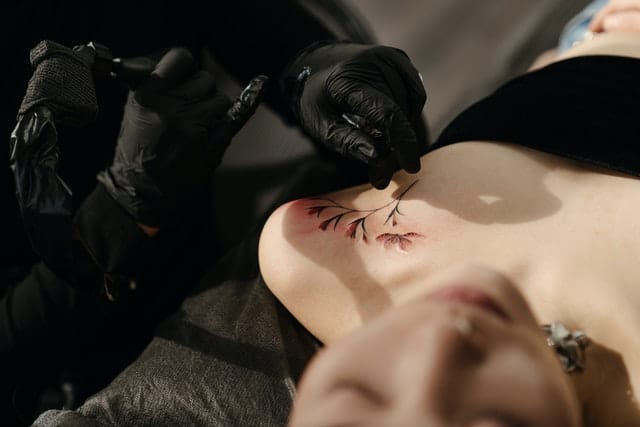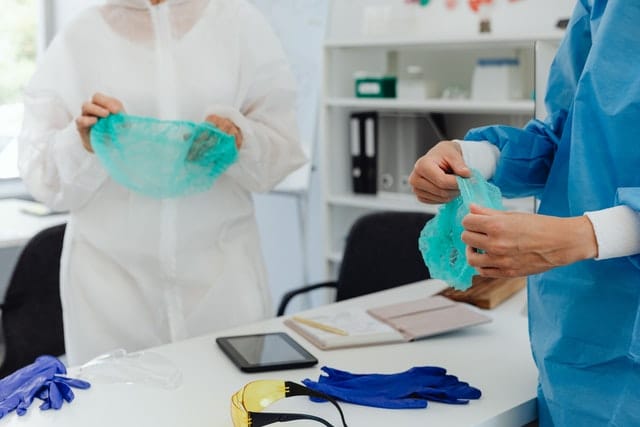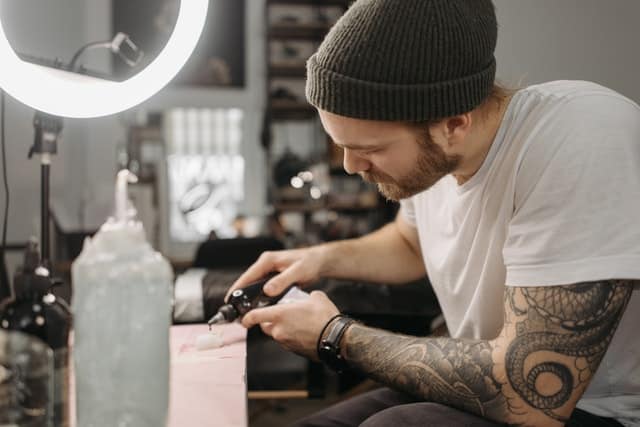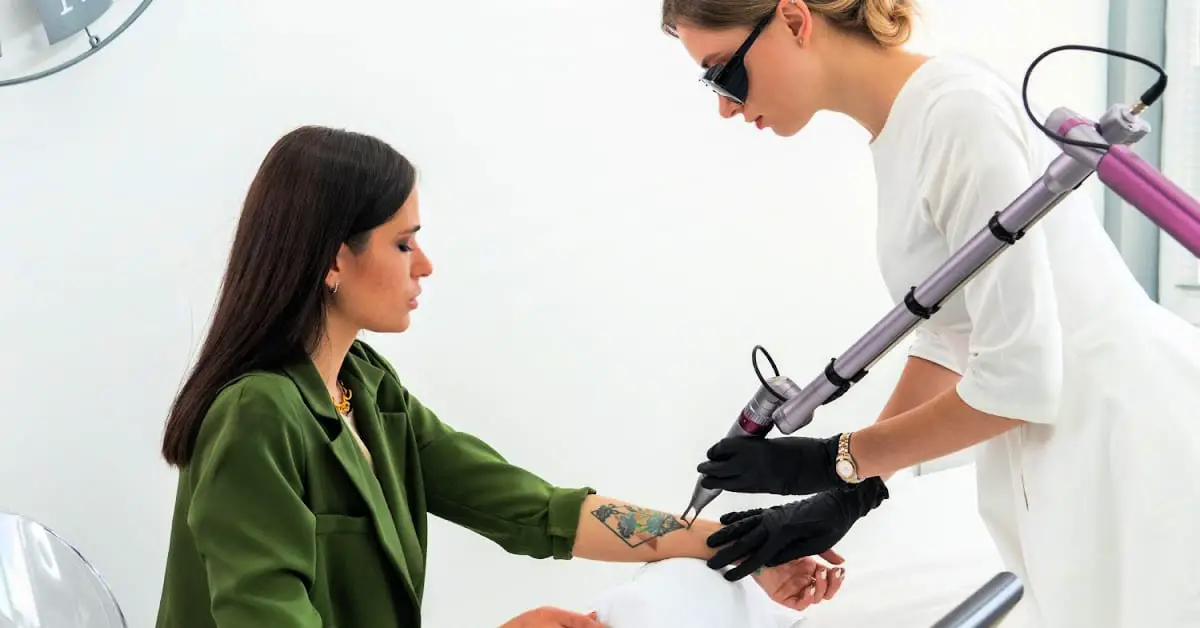Tattoos are supposed to be permanent, but can tattoos be removed? Yes, absolutely they can & there are various procedures available to remove unwanted skin art, let’s investigate.
Tattoos are a lifetime commitment. As cliche as it may sound, “think before you ink.” Let it resonate in your head before getting that tattoo.
The reasons why people get tattoos differ hugely, some do it for fun & others do it in the spur of the moment. Furthermore, some are even too young to have tattoos but get them anyway.
So how can tattoos be removed if I make the decision?
There’s no guarantee that all tattoos can be completely removed. It is a healed wound, thus, it will leave scars. Does tattoo removal hurt? Getting a tattoo hurts & I’m sorry to say, removing it will do too, potentially even more.

What Tattoos Can Be Removed?
It all depends on the size, age, and color. There’s no assurance that all kinds of tattoos can be removed. The design also matters. Large, bold designs in large pieces are quite hard to remove. Small delicate fine-line tattoos, on the other hand, are easy, quicker, and less painful to get removed.
Tattoo Size
Large tattoo pieces will require multiple sessions to remove. Tattoo pieces smaller than the regular sheet of paper will be easier. As a general rule, the bigger and more intense the tattoo, the longer it will take to remove.
Full-sleeve tattoos, chest, leg, and back pieces that are mostly saturated with colors, will take a lot more time to remove. Tattoos with heavy ink pigments will also take a lot of sessions to vanish.
The amount of pigment embedded in the skin makes it harder to remove. Thus, regardless of the size, how the tattoo was made also contributes to how it will age and the difficulty of tattoo removal.
Tattoo Age
As we’ve previously mentioned, it is typical for tattoos to fade over time, Tattoos also react to skin aging. As the skin ages, tattoos will do too. While pigments in older tattoos are already broken down, it is easier for a faded tattoo to be removed.
Moreover, how fast the tattoo fades also depends on its location. There are body parts that can grip ink pigments longer than others. Tattoos on the palms, feet, and body parts that experience friction often fade tattoos faster.
In summary, if your tattoo has started to age, it is generally going to be an easier process to get it removed.
What about the different colors of a tattoo?
Tattoo Colors
Tattoos in various intense colors are harder to remove than black and white ones.
Colored pigments spread across different skin parts are not easy to extract. Tattoos done in single colors are, however, easier. Generally, a black more common tattoo in black ink will be the easiest tattoo color to be removed.
During the removal process, some pigments might alter their saturation during the process. Especially hues mixed with white. White ink oxidizing can make tattoo removal a bit more difficult. On a brighter note, with the right tools and technician skills, colored tattoos can be removed professionally.
Most tattoo removal services will show before and after pics. To get an idea of the pain, effort, and success of the process, look closely. Look for a similar tattoo style that has been removed in a similar location, body part, and on a person or skin type around the same age.

What colors of tattoos can be removed?
All colors off tattoos can be removed, but the colors that are the easiest to remove include:
- black
- brown
- dark blue
- green
Can Tattoos Be Removed Completely?
Tattoo removal works. However, it still depends on several factors we previously spoke about.The age, size, design, and colors determine the tattoo removal process. The duration of the process also varies. Large colorful tattoos take longer to eradicate than small, less colorful ones.
Other factors that add up to the difficulty of the method are:
- Dark skin
- Skin conditions such as eczema
- Skin-related health conditions
Having these conditions does not mean you can’t have your tattoos removed. However, it will be a bit more challenging and expensive. Therefore, it is best to consider these factors before you decide on removing your tattoo:
- cost
- scarring risks
- effectiveness
- time and effort commitment
There is no certainty whether or not your tattoo can be fully removed. Specific factors can influence how it will turn out after the procedure. Some can successfully vanish it in a few sessions. While others need to go through several sessions. Doing so is not only physically painful but also financially. Additionally, tattoo removals aren’t cheap.
Tattoo Removal Cost
The below table shows a summary of top tattoo removal prices from locations across the US.
| Method | Average Cost | # of Sessions | Scarring Possibility | Effectiveness |
| Laser Removal | $450-500/session | 7-10 sessions | Low scarring possibility with the right aftercare routine. | It can fade the tattoo but can’t completely remove it. |
| Surgical Removal | $400-1,200/session | 1 session for regular-sized tattoos. Larger tattoos might require a few more. | It has a high scarring risk. | Tattoos will be extracted fully. |
| Dermabrasion | $300-800/session | 1 session is enough. | Results usually vary. | It can be extracted, but the results also differ. |

How Can Tattoos Be Removed?
Various procedures are offered for tattoo removal. Its effectiveness differs depending on the size, age, and colors of the tattoo. Choosing the one ideal for your tattoo is crucial. Each cost differently, and the methods are distinctive.
Lastly, the results vary from person to person.
What Are The Different Types of Tattoo Removal Procedures?
Tattoo Laser Removal
Laser removal is one of the first tattoo removal procedures introduced. Although it can’t completely remove the tattoos, it can make them significantly lighter. Q-switched laser is a new technology perceived as more effective.
Q-switched laser dissolves the ink by emitting strong pulses into the skin. It heats up the skin while diffusing the ink pigments. Q-switched laser tattoo removal treatment will require several sessions. J
The Q-switched laser also works better with dark skin. It does not alter the color of the skin after removing the tattoo. The average sessions take up to 7-10 with a 6-8 weeks gap between sessions.
The aftercare routine is absolutely essential to follow after every session. You will be recommended a routine to help heal the skin and also minimize the chance of infection.

Laser Tattoo Removal Aftercare
- Keep the area dry and clean all the time.
- Wear loose clothes to avoid friction.
- Never expose the treated area to direct sunlight.
- Avoid picking the scabs and blisters if ever they appear.
- Apply ointments recommended by the removal expert.
Laser Tattoo Removal Side Effects
Generally, laser tattoo removal treatment is the safest choice. It has minimal side effects, however, there are still possible complications that can occur.
- There is a slight chance that you’ll have a scar if the treated area gets infected.
- Only certain colors can be removed completely. Black and blue pigments are easily removed in contrast to other hues.
- A slight possibility of either hypopigmentation or hyperpigmentation. Hypopigmentation is when the treated skin area becomes lighter. Hyperpigmentation, on the other hand, results in darker skin.
- Cosmetic tattoos such as lip liner, eyebrows, and eyeliner can leave you with darker tones.
Surgical Tattoo Removal Method
Surgical tattoo removal procedure is ideal for small tattoos. It is also known as excision tattoo removal. The process involves cutting off the skin and stitching the gap together. This tattoo removal method is the most invasive. On a brighter note, it can fully remove the tattoo.
Excision tattoo removal is less expensive. However, it has a high chance of leaving a scar. Surgical excision is almost like a minor operation. It is typically performed in a plastic surgery room. The procedure takes a couple of hours.
Excision Tattoo Removal Aftercare
- Keep the area clean.
- Use recommended or prescribed ointment.
- Never expose the treated area to direct sunlight.
Surgical Tattoo Removal Risks
- It has a high scarring possibility.
- It is an invasive procedure.

Dermabrasion
Dermabrasion is not recommended for sensitive skin. The procedure involves sanding layers of the skin to leach out the ink. The effectiveness of such a method also varies & individuals with eczema are not recommended to undergo this kind of procedure.
Additionally, some people can have higher risks of bleeding and bruising if they take blood thinners. As for those with dark skin, hypopigmentation or hyperpigmentation might occur.
The operation requires the surgeon to administer anesthetics. Using a rotating abrasive device running at high speed, the top layers of the skin will be scraped off.
The procedure can take several hours. It depends on the size, colors, and age of the tattoo. After dermabrasion, discomfort in the treated area will be experienced. It can feel painful for days & the full recovery takes about two to three weeks. While the discolorations will vanish in eight to twelve weeks.
Dermabrasion Tattoo Removal Aftercare
- Prevent the wound from getting exposed to sunlight for three to six months.
- Apply prescribed ointment to avoid infections,
- Use sunscreen whenever you are outdoors.
- Avoid wearing tight clothes to stray away from friction.
- Never soak it in water until it’s fully healed.
How To Reduce Scarring from Dermabrasion?
- Wear sunscreen all the time when outdoors.
- Religiously apply the prescribed ointment.
- Never expose the area to UV.
- Use anti-scarring creams when it is fully healed.
Dermabrasion Treatment Risks
- Possible infections can occur.
- High risks of hypopigmentation and hyperpigmentation.
- Redness, discoloration, swelling, and bleeding may appear.
- Permanent scarring.
All tattoo removal procedures have their own pros and cons. The best thing to do is to research which best fits your condition. Some procedures may be effective to others but not to you, or vice versa. Since the removal of tattoos is an invasive procedure, it is important to know the underlying risks.

Can Tattoos Be Removed? – Conclusion
Yes, tattoos can be removed, but they can be painful, expensive, and take time & sometimes the result will not be perfect.
Remember, tattoos are meant to be permanent. Once you have etched the design into your skin, it will be something that you can erase but it is not easy.
Whether the tattoo removal treatment has scraped, faded, or been removed, there will be specs of it that will still be there. Getting the tattoo is already a huge expense, however removing them can be even bigger.
The best thing to do is to contemplate many times. Before deciding on the design, see if it is something that you will love looking at forever.
If you can’t decide yet, why not opt for temporary tattoos and see how the tattoos will look on you first?

